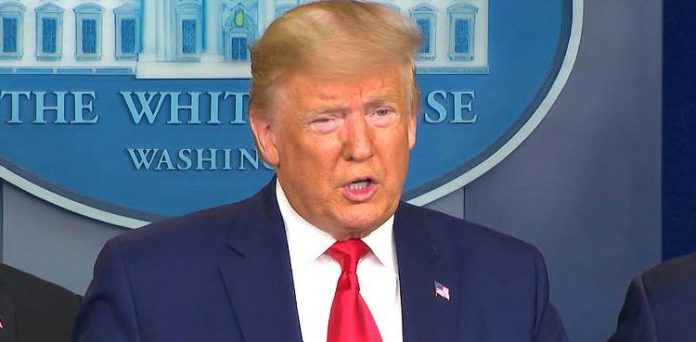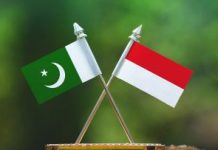U.S. President Donald Trump, known for his combative approach to international diplomacy, has once again launched a blistering attack on India—this time targeting New Delhi’s growing proximity to Russia and its prominent role in the BRICS alliance. As part of his renewed foreign policy pitch ahead of the 2024 presidential election, Trump has announced plans to further increase tariffs on Indian goods, framing the move as part of a broader strategy to protect American interests and counter economic threats posed by rising global alliances.
Trump’s criticism was particularly sharp regarding India’s continued purchase of Russian oil in substantial quantities despite global sanctions and Western pressure. According to Trump, India is not only buying Russian oil at discounted rates but also refining and re-exporting it at a profit, thereby undermining Western sanctions and benefiting economically from a war-torn global order. “They’re making money off a war they should be helping to stop,” Trump said at a recent rally. “And we’re just letting them get away with it.”
This position reflects Trump’s longstanding skepticism about global blocs that he believes challenge American supremacy. BRICS—comprising Brazil, Russia, India, China, and South Africa, with several new members joining—has particularly irked the former president. For Trump, BRICS represents a direct affront to U.S.-led institutions such as the G7 and the IMF. He has previously labeled BRICS as a “dangerous economic cartel” and expressed open disdain for its aspirations of creating a multipolar world.
India’s key role in BRICS only deepens Trump’s displeasure. While he once praised Indian Prime Minister Narendra Modi during his presidency and shared the stage with him at the “Howdy Modi” event in Texas, those gestures appear transactional in retrospect. Trump’s foreign policy, as always, is deeply rooted in self-interest and shifting alliances. He does not hesitate to pivot his stance if it suits his objectives, and India is now facing the brunt of his reversal.
Behind the tariff threat lies a deeper anxiety within Trump’s worldview: that the U.S. is slowly losing its global economic hegemony. From his vantage point, India’s actions—buying cheap Russian oil, trading in non-dollar currencies, and actively pushing BRICS expansion—are emblematic of a world no longer willing to bow to Washington. Trump’s solution? Hit back where it hurts most: the economy. Higher tariffs are his way of “disciplining” nations he sees as drifting out of America’s orbit.
This is not the first time Trump has wielded tariffs as a weapon. During his first term, he launched a trade war against China, imposed duties on steel and aluminum imports from allies, and unilaterally withdrew from international trade agreements. India too had faced tariff hikes under his previous administration, with Trump accusing New Delhi of unfair trade practices and calling it the “tariff king.”
This time, however, the rhetoric is more ideological. Trump’s actions against India are not just about trade imbalances—they are aimed at undermining BRICS and checking Russian influence by targeting its economic partners. India, unfortunately for Trump, ticks both boxes.
It’s also important to view Trump’s policy swings through a larger lens. His diplomacy is never permanent—it is interest-driven. One day, he may lambast a nation; the next, he may court it if it serves his needs. This flexibility, or what some call opportunism, allows Trump to adapt quickly to new geopolitical realities. It also means his current bonhomie with Pakistan—where he has spoken positively of Islamabad’s strategic location and its role in Afghan peace talks—may not last. Like all his foreign relations, it hinges entirely on what Trump wants at the moment.
For now, Trump’s criticisms of India resonate with certain domestic constituencies in the U.S. who are increasingly wary of global alliances undermining American jobs and industries. By portraying India as both a BRICS enabler and a beneficiary of discounted Russian oil, Trump seeks to justify punitive tariffs as a measure to “protect American workers.”
Yet his strategy risks deeper diplomatic consequences. India is a crucial partner for Washington in the Indo-Pacific strategy aimed at containing China. Alienating New Delhi could inadvertently push it further into the arms of Beijing and Moscow, accelerating the very multipolar shift Trump fears. Moreover, punitive tariffs may hurt American companies relying on Indian goods, particularly in the pharmaceutical and technology sectors.
While the Biden administration has adopted a more measured tone, quietly nudging India away from Russia and encouraging reforms within BRICS-like frameworks, Trump’s confrontational posture could reset U.S.-India ties in a way that alters long-term strategic calculations.
In the end, Trump’s approach is consistent with his larger political brand: unpredictable, transactional, and unapologetically nationalist. Countries like India—and even Pakistan—must understand that in Trump’s world, friendships are fleeting, and only American interest endures.
As the world watches Trump’s reemergence on the global stage, one thing is clear: his second coming is even more disruptive than the first. Whether it’s punishing India, taxing BRICS nations, or cozying up to former adversaries, Trump will continue to challenge the norms of diplomacy in pursuit of his “America First” doctrine.

















